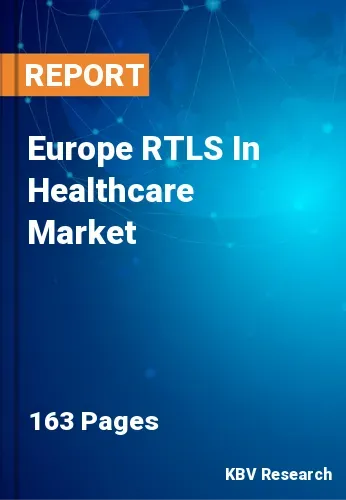The Europe RTLS In Healthcare Market would witness market growth of 17.7% CAGR during the forecast period (2023-2030).
In healthcare, it is crucial to ensure patients are safe and healthy. RTLS technology allows for the tracking and monitoring of patients within a healthcare facility. This is especially vital in emergency departments, where immediate care and monitoring are essential. RTLS aids in quickly locating patients, thus expediting care and reducing response times. Hospitals and healthcare facilities are often sprawling, complex environments with many staff members, each with roles and responsibilities. RTLS assists in tracking staff movements, ensuring they are where they need to be, thereby enhancing workflow efficiency and patient care. Proper hand hygiene is essential in reducing the spread of illnesses, a crucial component of healthcare. RTLS technology can monitor and ensure hand hygiene compliance by tracking when healthcare workers have sanitized their hands. This enhances patient safety and serves as a valuable tool in quality improvement initiatives.
Moreover, maintaining optimal environmental conditions in healthcare settings is crucial. RTLS technology can monitor and regulate temperature, humidity, and air quality. This is particularly important in storing sensitive medications and the well-being of patients with respiratory conditions. For facilities caring for patients with cognitive impairments or those at risk of falls, RTLS technology offers solutions for wandering and fall detection. Sensors placed strategically can alert staff when a patient has left a designated area or is at risk of falling, ensuring a rapid response.
According to Eurostat, Germany had the highest level of current healthcare expenditure among the EU Member States, valued at €432 billion in 2020. France procured the second highest level of current healthcare expenditure (€281 billion), followed by Italy (€160 billion) and Spain (€120 billion). For healthcare providers, the largest increase in expenditure between 2012 and 2020 in 11 EU Member States (for example, in Romania) was for hospitals, while in three more (for example, in Lithuania), it was for ambulatory healthcare providers. Therefore, the growth in the healthcare sectors in Europe is expected to drive the expansion of the market in the region.
The Germany market dominated the Europe RTLS In Healthcare Market by Country in 2022, and would continue to be a dominant market till 2030; thereby, achieving a market value of $442.2 million by 2030. The UK market is exhibiting a CAGR of 16.7% during (2023 - 2030). Additionally, The France market would experience a CAGR of 18.6% during (2023 - 2030).
Based on Facility Type, the market is segmented Hospitals & Healthcare Facilities, and Senior Living Facilities. Based on Component, the market is segmented into Hardware, Software, and Services. Based on Technology, the market is segmented into RFID, Wi-Fi, UWB, BLE, and Others. Based on Application, the market is segmented into Inventory/Asset Tracking & Management, Personnel Locating & Monitoring, Access Control & Security, Environmental Monitoring, Supply Chain Management & Automation, and Others. Based on countries, the market is segmented into Germany, UK, France, Russia, Spain, Italy, and Rest of Europe.
Free Valuable Insights: The Global RTLS In Healthcare Market will Hit $7.2 Billion by 2030, at a CAGR of 18.1%
The market research report covers the analysis of key stake holders of the market. Key companies profiled in the report include Securitas Healthcare, LLC, Zebra Technologies Corporation, Aruba Networks, Impinj, Inc., Savi Technology, Inc., Advantech Co., Ltd., Cerner Corporation, TeleTracking Technologies, Inc., CenTrak, Inc. and Ubisense Ltd.
By Facility Type
By Component
By Technology
By Application
By Country

Our team of dedicated experts can provide you with attractive expansion opportunities for your business.

